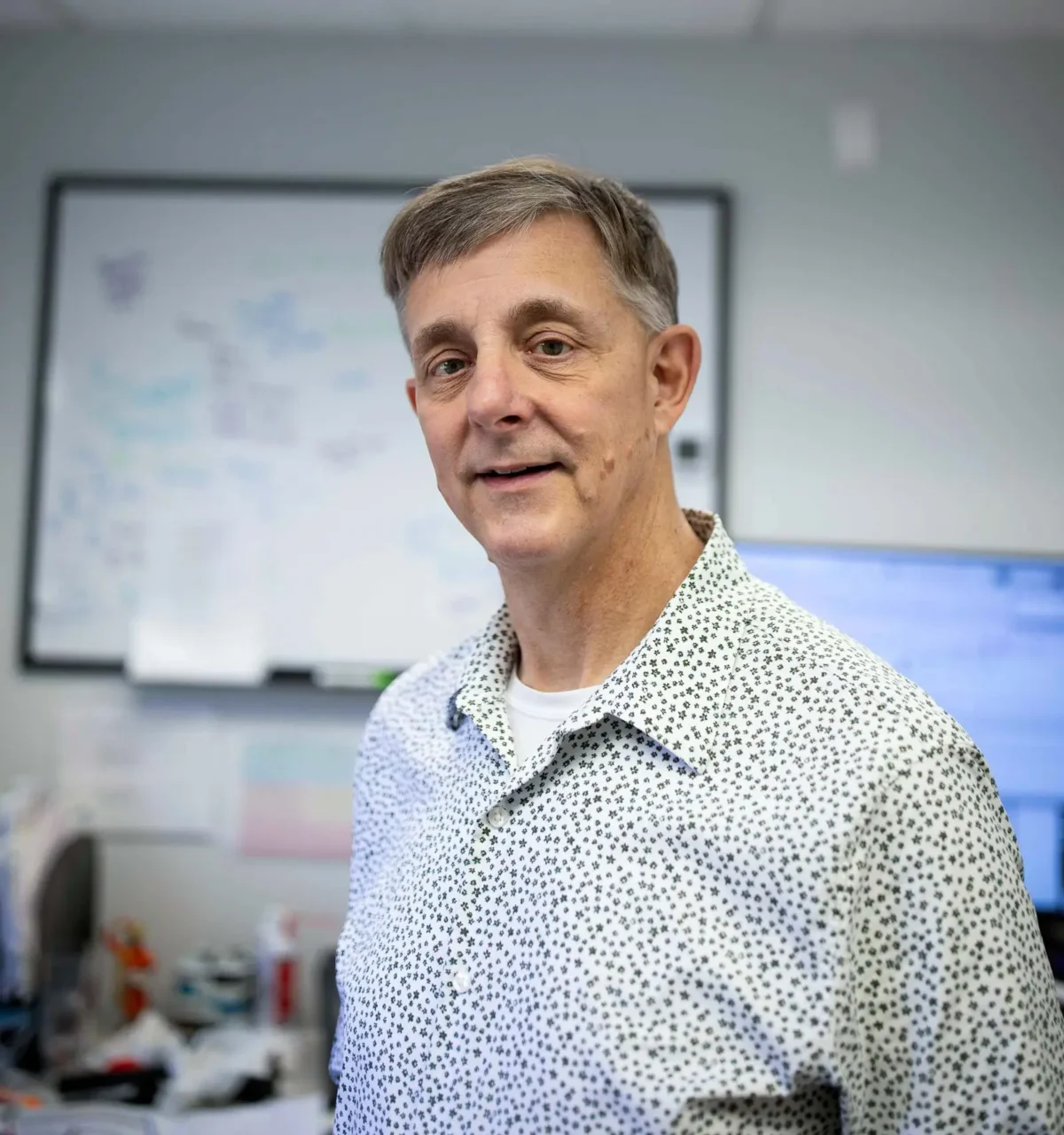Steve Olson has devoted his professional career working to advance medicine by inventing novel therapeutics. He has advanced new chemical entities through preclinical development and into Phase 1, 2 and 3 clinical trials, first as an individual contributor, and, eventually, as a project leader. Dr. Olson has extensive experience in a many therapeutic areas, including CNS, antibiotics and antibiotic resistance, metabolic syndrome, diabetes, atherosclerosis, inflammation, cardiology, and oncology. Working closely with scientists from a wide range of drug discovery-related disciplines, he has gained a strong theoretical and working knowledge of pharmacokinetics and drug metabolism, molecular modeling, conformational analysis, pharmaceutics including vehicle and crystal form selection, pharmacology, pharmacodynamic modeling, toxicology, radiochemistry, and clinical trial design.
Dr. Olson received his PhD in Organic Chemistry from Yale University in the laboratory of Professor Samuel Danishefsky where he was part of the team to synthesize the anticancer natural product calicheamicin ɣ1I, which later became the warhead for the first antibody drug conjugate therapeutic Primaxin. After postdoctoral research at U.C. Berkeley, Dr. Olson joined Merck Research Laboratories as a Senior Research Chemist. He initiated chemistry for the 11β-hydroxysteroid dehydrogenase type 1 (11β-HSD1) project and developed a robotic synthesis to deliver more than 500 analogs to explore the initial structure activity relationships. Within a year, he conceived MK-0916 and prepared it in the laboratory. This molecule was the first example of an 11β-HSD1 inhibitor in clinical trials and was safely dosed to many patients in 3-month and 6-month Phase 2 clinical trials for diabetes, hypertension, and obesity. In 2006, Dr. Olson moved to Amgen where he led a 34-person team identifying small molecule MDM2-p53 protein-protein interaction inhibitors. Using de novo molecular design aided by conformational analysis, the team discovered and developed two clinical candidates, AMG 232 and AM-7209, with picomolar affinity for the MDM2 protein. AMG 232, now navtemadlin, is currently in Phase 3 clinical trials for myelofibrosis and Phase 2 trials for Merkel cell carcinoma and acute myeloid leukemia.
Following his success at Amgen, Dr. Olson went on to lead the drug discovery group at the UCSF Institute for Neurodegenerative Diseases (IND). Directed by Nobel laureate Dr. Stanley Prusiner, the IND initiated and advanced drug discovery programs to cure a wide range of neurodegenerative diseases including Alzheimer’s disease, multiple system atrophy, Parkinson’s disease and chronic traumatic encephalopathy. While at UCSF, he developed an enduring scientific interest in the discovery of novel CNS drugs and overcoming the practical and theoretical challenges of delivering small molecules through the blood-brain and deliver drugs at pharmacologically effective concentrations to CNS targets.
His current role is Executive Director and head of Medicinal Chemistry at the Prebys Center, Sanford Burnham Prebys’ comprehensive drug discovery center.
